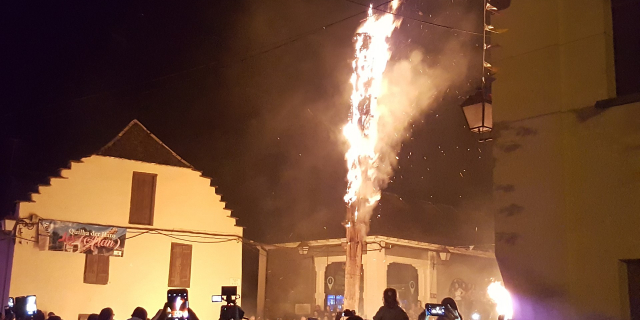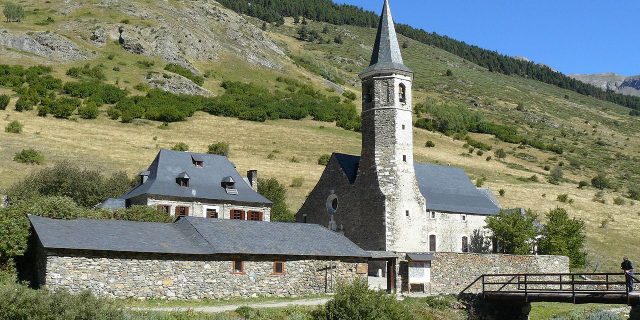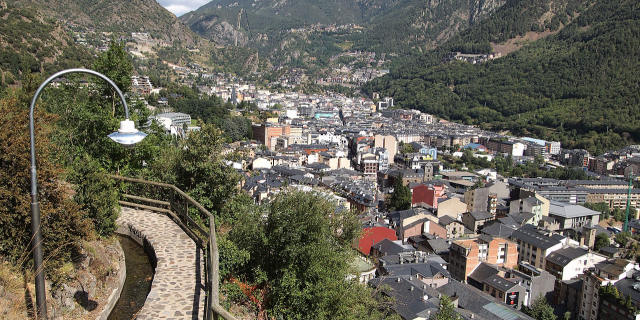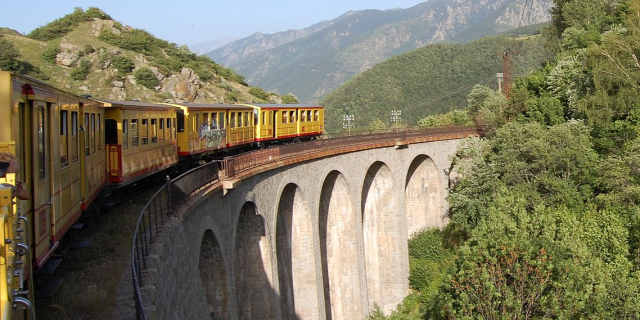Val d'Aran
Context of Val d'Aran
Aran (Occitan: [aˈɾan]; Catalan: [əˈɾan]; Spanish: [aˈɾan]) (previously officially called in Occitan Val d'Aran, Catalan: Vall d'Aran, Spanish: Valle de Arán) is an administrative entity (formerly considered a comarca) in Lleida, Catalonia, Spain, consisting of the Aran Valley, 620.47 square kilometres (239.56 sq mi) in area, in the Pyrenees mountains, in the northwestern part of the province of Lleida.
This valley constitutes the only contiguous part of Catalonia located on the northern side of the Pyrenees. Hence, this valley holds the only Catalan rivers to flow into the Atlantic Ocean (for ...Read more
Aran (Occitan: [aˈɾan]; Catalan: [əˈɾan]; Spanish: [aˈɾan]) (previously officially called in Occitan Val d'Aran, Catalan: Vall d'Aran, Spanish: Valle de Arán) is an administrative entity (formerly considered a comarca) in Lleida, Catalonia, Spain, consisting of the Aran Valley, 620.47 square kilometres (239.56 sq mi) in area, in the Pyrenees mountains, in the northwestern part of the province of Lleida.
This valley constitutes the only contiguous part of Catalonia located on the northern side of the Pyrenees. Hence, this valley holds the only Catalan rivers to flow into the Atlantic Ocean (for the same reason, the region is characterized by an Atlantic climate, instead of a Mediterranean one). The Garonne river flows through Aran from its source on the Pla de Beret (Beret Flat) near the Port de la Bonaigua. It is joined by the Joèu river (from the slopes of Aneto mountain) which passes underground at the Forau de Aigualluts. It then reappears in the Val dera Artiga de Lin before reaching the Aran valley, then through France and eventually to the Atlantic Ocean. The Noguera Pallaresa river, whose source is only a hundred meters from that of the Garonne, flows the opposite way towards the Mediterranean.
Aran borders France on the north, the Autonomous Community of Aragon to the west and the Catalan comarques of Alta Ribagorça to the south and Pallars Sobirà to the east. Its capital is Vielha, with 5,474 inhabitants (2014). The entire population of the valley is about 9,991 (2014). As of 2001, a plurality of people in Aran spoke Spanish (38.78%) as their native language, followed by Aranese (34.19%), then Catalan (19.45%) with 7.56% having a different native language. While Aranese is the mother tongue of 62.87% of people born in the region, it is less frequent among residents born outside the valley.
More about Val d'Aran
- Population 10175
- Area 633
- This article may be expanded with text translated from the corresponding article in Catalan. (June 2020) Click [show] for important translation instructions.View a machine-translated version of the Catalan article. Machine translation, like DeepL or Google Translate, is a useful starting point for translations, but translators must revise errors as necessary and confirm that the translation is accurate, rather than simply copy-pasting machine-translated text into the English Wikipedia. Do not translate text that appears unreliable or low-quality....Read moreRead lessThis article may be expanded with text translated from the corresponding article in Catalan. (June 2020) Click [show] for important translation instructions.View a machine-translated version of the Catalan article. Machine translation, like DeepL or Google Translate, is a useful starting point for translations, but translators must revise errors as necessary and confirm that the translation is accurate, rather than simply copy-pasting machine-translated text into the English Wikipedia. Do not translate text that appears unreliable or low-quality. If possible, verify the text with references provided in the foreign-language article. You must provide copyright attribution in the edit summary accompanying your translation by providing an interlanguage link to the source of your translation. A model attribution edit summary is Content in this edit is translated from the existing Catalan Wikipedia article at [[:ca:Història d'Aran]]; see its history for attribution. You should also add the template {{Translated|ca|Història d'Aran}} to the talk page. For more guidance, see Wikipedia:Translation.
In 1313, James II of Aragon granted administrative and political autonomy to the Aran Valley, the legal details of which are described in a Latin manuscript called the Querimonia. The devolution of power was a reward for the Aranese pledging allegiance to James II in a dispute with the kingdoms of France and Mallorca over control of the valley.[1] This status was suppressed in 1834, when the Valley was integrated into the new Province of Lleida, in the context of the establishment of the Spanish provinces at the beginning of the liberal state.
On 19 October 1944, Spanish Communist Party guerrillas invaded the valley in an attempt to bring about the fall of the Spanish dictatorship. They took control of several villages until October 27, 1944, but were forced to retreat back into France after Franco sent reinforcements to defend Vielha.[2]
Before the construction of the Vielha tunnel, opened in 1948, the Aran valley had no direct communication with the south side of the mountains during winter.
In 1987 it became an administrative comarca. In 1990 the special status of Aran within Catalonia was restored by the Parliament of Catalonia, reestablishing the Conselh Generau, granting it a degree of home rule and declaring Occitan as official language. In 2015 the Catalan Parliament passed a new law which increased the powers of the Conselh Generau and recognized Aran as an "Occitan national reality".
The population of Val d'Aran has generally been opposed to the Catalan independence movement due to lack of a strong Catalan identity.[3]
^ Turell, M. Teresa, ed. (2001). Multilingualism in Spain : sociolinguistic and psycholinguistic aspects of linguistic minority groups ([Online-Ausg.]. ed.). Clevedon [u.a.]: Multilingual Matters. p. 142. ISBN 9781853594915. Retrieved 19 August 2015. ^ Rodríguez Marcos, Javier. "El valle de la libertad". elpais.com (in Spanish). El Pais. Retrieved 18 August 2015. ^ "Así es Bossòst, el pueblo más contrario a la independencia de Cataluña". YouTube (in Spanish). BBC News Mundo. Retrieved 24 November 2021.

































